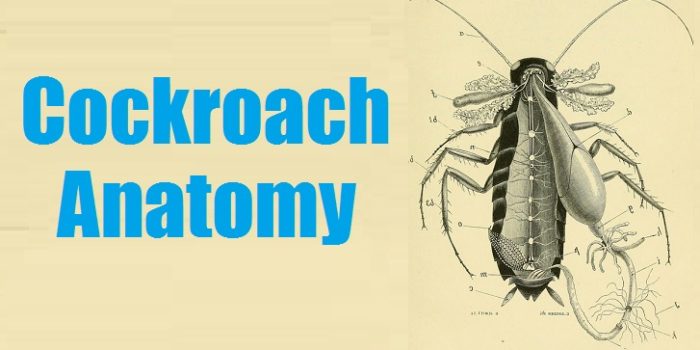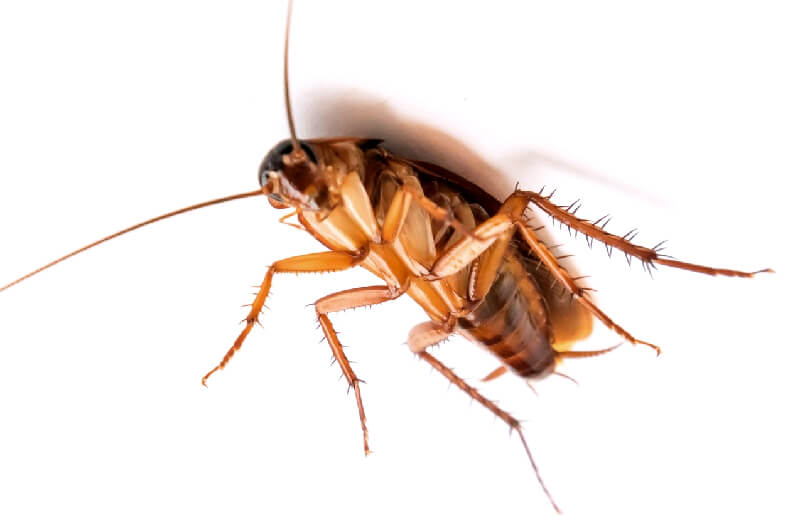Anatomy of Cockroach with Picture

Across the globe, there are over 4,500 species of cockroaches. While each species exhibits slight variations, its core anatomy remains relatively consistent. The cockroach body is a marvel of evolutionary design, divided into three primary segments — the head, thorax, and abdomen.
Head: The Sensory Center
At the forefront of the cockroach’s body lies its head. This segment houses:
- Compound Eyes: Unlike human eyes, cockroach eyes comprise over a thousand tiny lenses, allowing them to perceive multiple images simultaneously. This feature provides a wider field of vision, essential for detecting movement and evading predators. However, their vision is generally poor, and they rely more on their other senses.
- Antennae: Long and flexible, the antennae function as sensory organs, aiding in navigation by picking up smells and vibrations. These ‘feelers’ also help them sense environmental changes and locate food sources.
- Mouthparts: A roach’s mouth is versatile. Moving from side to side, it can process both smell and taste concurrently. Equipped with salivary glands and an esophagus, the mouth also plays a role in initiating digestion.

Thorax: The Locomotion Hub
Following the head is the thorax, which is chiefly responsible for movement. It contains:
- Legs: All cockroaches have three pairs of legs, giving them six in total. The legs have short, spiky protrusions that allow them to adhere to various surfaces, scale walls, and even traverse ceilings. Furthermore, their legs are highly sensitive to touch, allowing rapid response to threats.
- Wings: Most adult cockroaches possess two pairs of wings. However, only a few species can genuinely fly. These wings can sometimes be more symbolic than functional.
- Pronotum: This plate-like structure located behind the head is significant for distinguishing between species, as it often contains unique markings.
Abdomen: The Core Functional Center
The abdomen houses a variety of vital organs and structures, including:
- Reproductive Organs: These are essential for the continuation of the species.
- Cerci: Located at the abdomen’s rear, these two small protrusions function as rear antennae. Highly sensitive to vibrations, cerci allow cockroaches to detect even the slightest movements, often resulting in that near-instantaneous darting motion we observe when we stumble upon them.
- Digestive System: After the mouth processes food and temporarily stored in the crop, it moves to the cockroach’s stomach. Here, enzymes within the gastric caecea break it down. Following this, the mid-gut absorbs the nutrients. This system ensures that cockroaches can derive nutrients from various food sources.
- Respiratory System: Spiracles, small openings on the sides of a cockroach’s body, facilitate breathing. They draw in air, which then travels through tubes called tracheae to distribute oxygen throughout the body.
- Fat Bodies: This white substance inside cockroaches functions similarly to fat in humans. It stores energy derived from nutrients, ensuring cockroaches have the necessary reserves to survive when food is scarce.
How Do The Cockroaches Breathe?
Out of 4500 species in the world, a cockroach can breathe differently. They do not need the Head for breathing. Therefore they breathe through an internal tube process called tracheae. This tracheae system brings oxygen directly to the cells. For this reason, they are even independent of mouth breathing.
Do Cockroaches Have A Brain?
We have already given you the roach head information that it can live without the Head for a week. But do you ever think about how this could be possible? Yes. This is possible because they can survive through a decapitation system that humans cannot.
As cockroaches are cold-blooded and their brains do not control blood pressure and breathing system, they do not even utilize their brains. They stay quiet, sit around, and die only after being affected by the bacteria or virus. Also, check out the life cycle of a cockroach with a diagram.
Are Cockroaches Clean?
This is a common question to all sufferers as it stays in a dirty dark place, spreader of disease. However, you will be amazed to know that roach-like keep them always clean. Though they like to live in a warm, humid place, they maintain cleanness.
Why Do Cockroaches Never Die?
The roach breathing system is not dependent on the mouth or Brain they never die. But they died on their backs. Because when any insecticide is used, it directly affects their nervous system, creating muscular spasms and flips on their back.
Finally, this is about cockroach anatomy and their central body part. Although this is a concise discussion, removing cockroaches dramatically is the secret weapon.
Conclusion
Cockroaches are more than just household pests; they’re evolutionary masterpieces. Their intricate anatomy has evolved over millions of years, enabling them to thrive in diverse environments and survive challenges that would wipe out lesser species.
Every aspect of a cockroach’s anatomy has been fine-tuned for survival, from their multifaceted eyes to their efficient digestive system. Knowing their anatomy can provide invaluable insights for those seeking to control or study them, but it also fosters respect for these resilient creatures.

James E. Butkovich, Pest control maven with a knack for eco-friendly & Chemical solutions. Blogger with a mission to make homes pest-free, one post at a time.